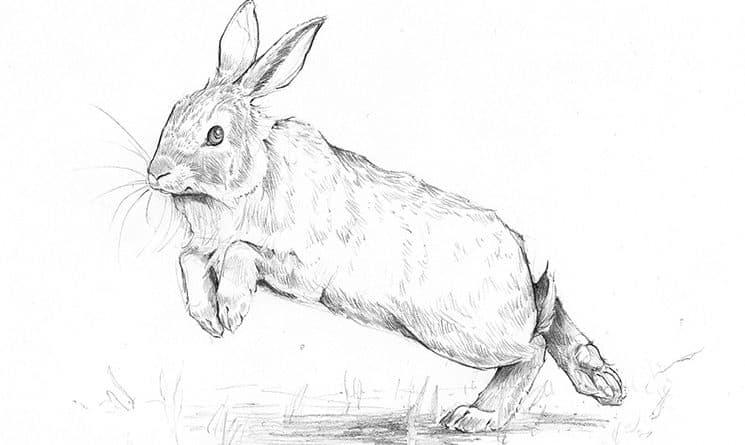If you’ve been seeing more New England cottontail rabbits than usual hopping around the Bellamy River Wildlife Sanctuary in Dover, you can thank the New Hampshire Fish and Game Department’s wildlife action plan. First compiled in 2006, the plan collects data and maps that local, state, and federal agencies, universities, conservation groups, and others use to make decisions about land use, development, and conservation efforts. The New England cottontail was identified as a “species of greatest concern” a decade ago, but conservation efforts have restored hundreds of acres of habitat and a captive breeding program is helping the species slowly bounce back.
On Nov. 7, N.H. Fish and Game officials unveiled the latest revision to the wildlife action plan and sent it off to federal regulators for review. The new plan sees a jump in the number of species of greatest concern, from 118 in 2006 to 169 in 2015, with bats, birds, bees, butterflies, turtles, dragonflies, and others all identified as species in need of special attention. The report also identifies saltmarshes, dunes, vernal pools, and warm-water rivers, among others, as habitats in need of conservation. Every state compiles its own action plan, and the plans often allow states to work together on conservation efforts.
The Sound spoke with John Kanter, the supervisor for N.H. Fish and Game’s nongame and endangered wildlife program, which helps coordinate the plan, about the latest revision, successes from the last decade, and what Seacoast residents can do to help wildlife.
What goes into developing the plan? How many people contribute, and how is the data collected?
We have a central team that’s actually been together since we completed the last plan, the wildlife action plan implementation team (we call it “WAPIT”). From my staff, there are about five of us, and there’s one or two folks from The Nature Conservancy, the Natural Heritage Bureau … and Dr. Pam Hunt from New Hampshire Audubon. … Some of that data is stored here in house, but the data on rare plants and animals, the Natural Heritage Bureau, one of their functions is to keep that information in a database that’s part of a national network. Those are two sources of data about where wildlife is and there are various surveys that show us whether populations are increasing or decreasing. And then, all those land characteristics, … a lot of that stuff has now been (collected), whether using satellite or aerial imaging. There are all these layers of information of what the condition of forests and wetlands are out there, and we have a specialist at Fish and Game that pulls all that information together to develop these maps. That’s kind of the core group, but we reach out to many other folks as well, so there are university graduate students, professors, and biologists from federal agencies that all contributed to the information as well.
There was a significant jump in the number of species of greatest concern from 2005 to 2015. Did having more data help you identify more species at risk?
Yes, we know more. An example of a species or a group of insects that we have much more information on are dragonflies and damselflies, thanks to a citizen science project N.H. Audubon did to get more info about their distribution, so we learned more about them: which ones are rare and may need special attention and which ones are more common than we thought. … The other (reason for the) jump is that white nose syndrome is hitting bats, and most of our bat species right now are at risk because of the fungus.
What Seacoast species are most at risk?
We’ve always had so much going on (in the Seacoast) with birds like the piping plover and common terns. The habitats around the salt marshes around the estuaries are important to a number of bird species as well, and certainly one of primary focus areas for the New England cottontail is in the Seacoast region.
Since the plan was launched in 2006, have there been any improvements? Is the New England cottontail a success story?
The success is not the recovery yet. The success is getting all the states working together to do the habitat work on the ground to set the stage for comeback of the rabbits and to put the captive rearing program into place so we can have rabbits to populate those newly restored areas. … (The success) is based on the power of the programs in place to recover (the habitat), much more so than the fact we had reached the recovery of that species. We’ve found lots of positive signs. For our releases near the Bellamy wildlife area, we will continue to put captive-bred rabbits out there, but we also know they’re reproducing out there on their own in the wild.
Our tern colony out at the Isles of Shoals has become one of the largest in the Gulf of Maine, and we have a steady number of federally-endangered roseate terns. … The colony itself is rebuilt and well-established. Blanding’s turtles have been a success more from the standpoint that we know so much more … We determined that 40 percent of the Blanding’s turtles that occur in New England are here in New Hampshire. What we do for that species in the state has broad ramifications.
What can people do at the local level, or personally, to help preserve species and habitats?
(Fish and Game) can provide the expertise to point people in the direction of what a good habitat looks like, bit it’s up to local conservation commissions and planning boards to figure out how to protect those areas or how to maintain them. So, being involved in your town is one way. At the individual scale, your own backyard provides a habitat for wildlife, and we’re now seeing the importance of supporting the wild pollinators that are out there.
Read the 2015 N.H. wildlife action plan at wildnh.com/wildlife/wap.html.

